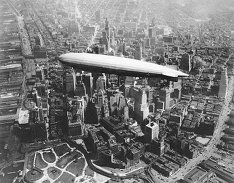When planning a visit to steampunk world, it is important to know how to find your way about. While not intrinsically alien, steampunk transportation does have some significant differences from our own that you should be aware of when traveling.
Upon arriving the first type of transport you are likely to see is that steampunk hallmark: the airship. Few inventions have so captured the hearts of steampunk writers and artists, perhaps due to a sense that airships never got their chance to shine in our own history. Whether it is the solitary slapdash ship of air pirates in Retribution Falls by Christopher Wooding, vast military fleets including genetically engineered floating whales in Scott Westerfeld’s Leviathan, or the solitary circling tomb or a madman in James Blaylock’s Homunculus, airships will likely dot the skies of whatever steampunk world you visit.
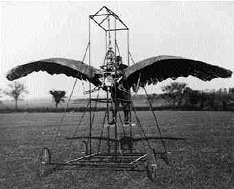
Also inhabiting the steampunk skies are ornithopters (flying machines with flapping wings), simple hot air balloons, and occasional oddities such as Ian Fleming’s flying-floating-driving car Chitty Chitty Bang Bang.
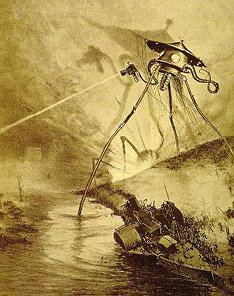
Closer to the ground, you may well find a preponderance of vehicles that move not on wheels, but legs. They may be tripods from Mars (War of the Worlds by H.G. Wells), giant mechanical spiders (Larklight by Philip Reeves), or war stompers (Girl Genius by Phil and Kaja Foglio). Or they may be low-to-the-ground spider tanks or centipede trains. Regardless of the form, do not be surprised to see these wandering the landscape.
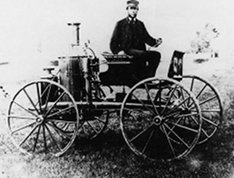
If walking vehicles are not your cup of tea, fear not; there are plenty of wheeled vehicles as well on the ground, most notably trains, such as the title vehicle from Dreadnought by Cherie Priest and The Wanderer from Wild Wild West. The importance of trains in our own 19th century cannot be overstated, nor they diversity of propulsion means they used, ranging from the traditional steam engine to pressurized pneumatic tubes to being pushed along the line by a pressure bubble in a tube-like middle rail. If you lose your airship ticket, rail may well be your best bet for longer range travel.
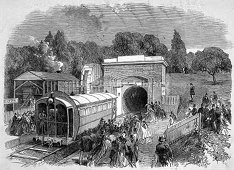
Along with the trains, you may encounter steam powered “cars,” ranging from Gurney carriages such as existed in our own world to sleek black Baruch Landaus of Lavie Tidhar’s The Bookman. And where there are cars and war, there are tanks, such as the Texian rolling-crawlers that patrol the streets of New Orleans in Cherie Priest’s Ganymede. Not all wheeled transport is steam-powered, of course, and horse-drawn hansom cabs remain a part of urban life in many steampunk cities.
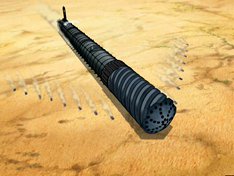
The world does not stop at the ground, and the steampunk world is not lacking in machines to dig and drill through earth and rock, albeit not always with positive results. In Cherie Priest’s Boneshaker, the title machine destroys the underpinnings of 19th century Seattle and releases zombie-creating Blight gas. On the other hand, in Blaylock’s The Digging Leviathan the hero just wants to find another world hidden within our own. Perhaps the mightiest such machine is called merely The Drill and was designed to breach the great walls of Ba Sing Se on Avatar: The Last Airbender. Given their destructive nature, you may wish to avoid boarding this sort of vehicle, but for some of you it may be just the adventure you seek.

Two thirds of Earth is covered by water, so you’d think there would be plenty of steampunk naval transports, but in most steampunk worlds these seem to have taken a back seat to their airborne cousins. Next to an airship, surface ships seem somehow less romantic. This is unfortunate as the 19th century was a time of great transition for ships in our world, as they evolved from sailing power to steam. Of particular note was the beautiful ship called the S.S. Great Western designed built by Kingdom Isambard Brunel, which was a hybrid, powered by both sails and mighty steam-driven paddle wheels on its sides. The only prominently featured fictional steampunk navy to spring to my mind is the Fire Nation Fleet, again from Avatar: the Last Airbender, although there are certainly references to steam-powered fleets in other works such as The Difference Engine by William Gibson and Bruce Sterling.
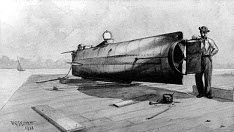
Just as the drilling machines dig their way under the earth, steampunk worlds include submarines that travel beneath the waves, the most famous of which brings us back to one of the founding fathers of steampunk, Jules Verne and his creation Captain Nemo’s Nautilus. There may not be a more iconic steampunk figure than Captain Nemo playing is pipe organ as his iron titan plows through the depths. On a more historical note, you could try to pilot a U.S. Civil War Hunley, such as the one that plays a central role in Cherie Priest’s Ganymede.

This ends our tour of the most common forms of steampunk transportation, but in your travels, remember to keep an eye out for the truly unique ones lurking out there. Steampunk marks the intersection of invention and anachronism, where history and fantasy collide with technology, and endless possibilities await you. Jules Verne might send you to the moon in a glorified bullet in From the Earth to the Moon, whereas H.G. Wells may do the same using an antigravity substance called Cavorite in The First Men in the Moon. In Howl’s Moving Castle, the entire title structure walks about the landscape on impossibly small legs. Philip Reeves not only gives us a spaceborne Victorian house built in all three dimensions from a floating center of gravity in Larklight, but also entire cities on treads wandering the countryside in search of smaller towns to devour in Mortal Engines. In the Doctor Who episode The Next Doctor, you can witness Victorian London under siege by a truly giant mechanical robot-shaped ship called the Cyberking. And, if you are lucky, your travels just might take you aboard that greatest of all steampunk transports: H.G. Wells’ The Time Machine.
John Leavitt is a long time lover of speculative fiction in all its forms. He runs steampunk.com when not working or chasing his kids.










